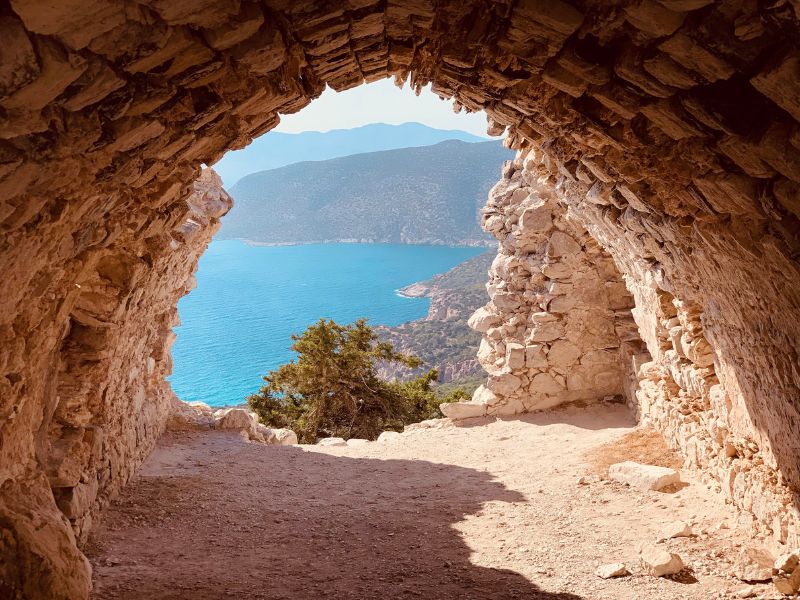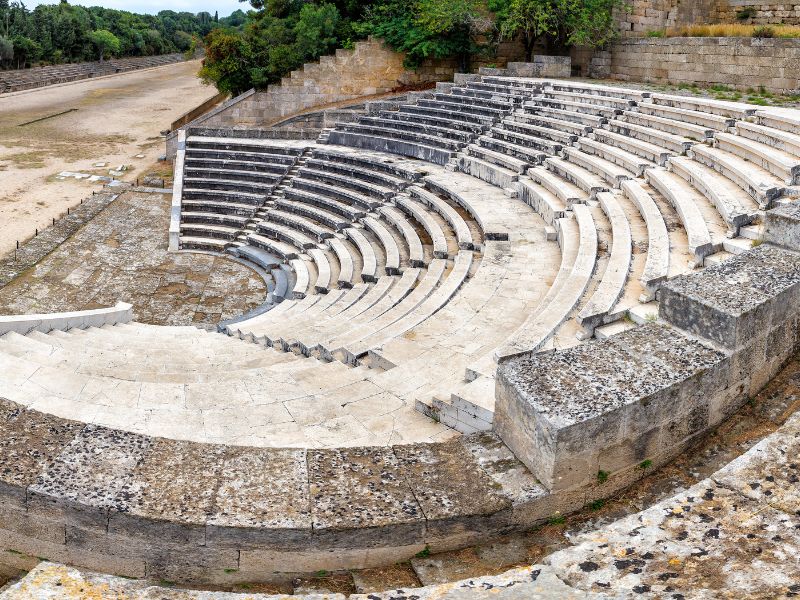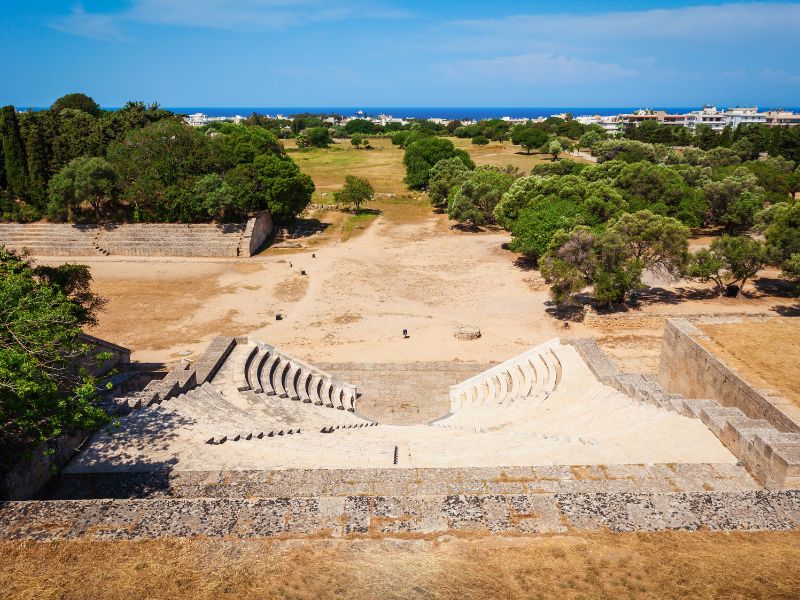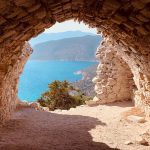
The Rhetoric Schools of Rhodes: Voices of the Ancient World
May 28, 2025Temple of Apollo in Rhodes: The Acropolis’ Sacred Heart
October 9, 2025Table of Contents
A Hill Where Time Still Breathes
There are few spots on earth where the centuries feel so visible. Stand on Monte Smith, above modern Rhodes, and the island’s whole story seems to lie open before you. The Aegean shimmers below; the terraces of the Acropolis drift in and out of sunlight; far off, the Turkish coast fades into blue haze. View from Monte Smith never really ends.
The same light that once washed over temples and stadiums now touches hotel domes and harbour cranes. Beauty and history share the same horizon here — the view from Monte Smith feels less like scenery and more like memory made visible.
Monte Smith – The Hill of Light and Memory

The hill rises gently to the southwest of the city, crowned by ruins and pine trees. In antiquity, this was sacred ground — the Acropolis of Rhodes, home to temples of Apollo Pythios and Helios. The ancients built here for a reason: the height let their sanctuaries greet both sunrise and sunset, the twin symbols of renewal.
Centuries later, the place gained a new name when Admiral Sidney Smith used it as a lookout during the Napoleonic Wars. Even that story fits the hill’s character. Whether watching fleets on the horizon or stars overhead, Monte Smith has always belonged to those who keep watch.
Walk its winding paths today and the noise of the city drops away. The air feels thinner, lighter; the wind smells faintly of resin and sea salt. It’s not nostalgia you feel up here — more a calm awareness that history still breathes just below the surface.
A Landscape Drawn by the Gods
From the summit, the island unfolds like a painted map. To the north, the harbours of Rhodes — Mandraki with its statues of deer where the Colossus once stood, and the deeper Commercial Port opening to the east. To the south, hills ripple with olive groves and quiet villages. But everywhere, the sea dominates: vast, fluent, alive.
The view from Monte Smith was sacred long before it became scenic. The ancients aligned their temples with the movement of the sun so that each dawn lit the columns of Apollo’s shrine and each sunset gilded the terraces below. Geometry, astronomy, and faith converged on this hill.
Even today, the light feels deliberate. It sharpens edges, turns limestone to gold, and carves shadows that seem almost architectural. Looking out, you sense why the Rhodians called their home the island of the sun. Here, illumination is not gentle; it’s articulate — a language spoken through colour and air.
The Acropolis Beneath – Temples, Stadiums, and Sacred Design

From above, the pattern of the Acropolis reveals itself with mathematical grace. The Doric Temple of Apollo crowns the upper terrace, its surviving columns rising against the blue. Below stretch the gymnasium and the 210-metre stadium where athletes once ran in honour of Helios.
Seen from this height, the composition feels intentional: straight stoas balanced by the soft curve of the stadium’s sphendone, sunlight sliding along every line. For the Rhodians, such symmetry wasn’t decorative — it was moral. To build in proportion was to live in balance. Even in ruins, the marble catches the light exactly as it did two thousand years ago, and for a moment the city’s old harmony seems whole again.
The small Odeon completes the picture, a semicircle of quiet stone once filled with music and debate. Together these spaces form a kind of silent orchestra, still playing beneath the open sky.
When the Sun Goes Down
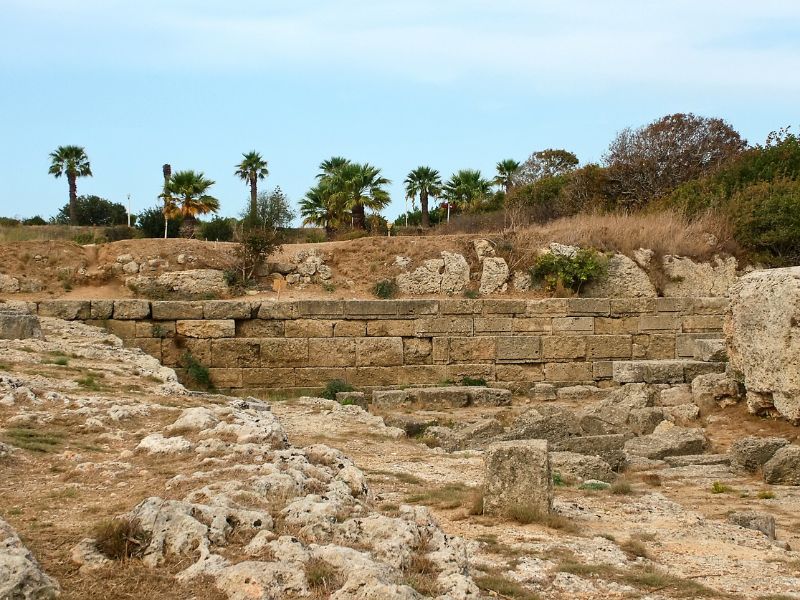
As day drifts into evening, the view from Monte Smith changes mood. The air cools, the sea turns metallic, and the setting sun spills fire across the ruins. Locals climb the hill with coffee or wine, travellers pause with cameras, and for a few minutes everyone falls silent. The horizon darkens behind Asia Minor, and the island’s nickname — the land of Helios — suddenly feels literal.
Watching the sunset here is less a pastime than a small ritual. Each descent of the sun repeats a truth the Rhodians always knew: beauty and transience belong to one another. When night comes, city lights shimmer below like fallen constellations, echoing the stars above. The dialogue between heaven and earth continues, calm and eternal.
A View that Speaks
The view from Monte Smith is more than a panorama; it’s the distilled essence of Rhodes. In a single sweep of sea and stone you read the island’s whole philosophy — faith in light, respect for form, confidence in continuity. Every terrace, every column, every glint on the water tells a part of that story.
Standing here, you understand why the Rhodians built upward toward the sun and why their city became a beacon of order and grace. Monte Smith remains their watchtower — a meeting point between past and present, between the known and the infinite horizon.
When the last light fades and the first stars rise, the hill keeps its quiet vigil, reminding anyone who stands upon it that beauty, wisdom, and the sea have always spoken the same language on this island of light.
